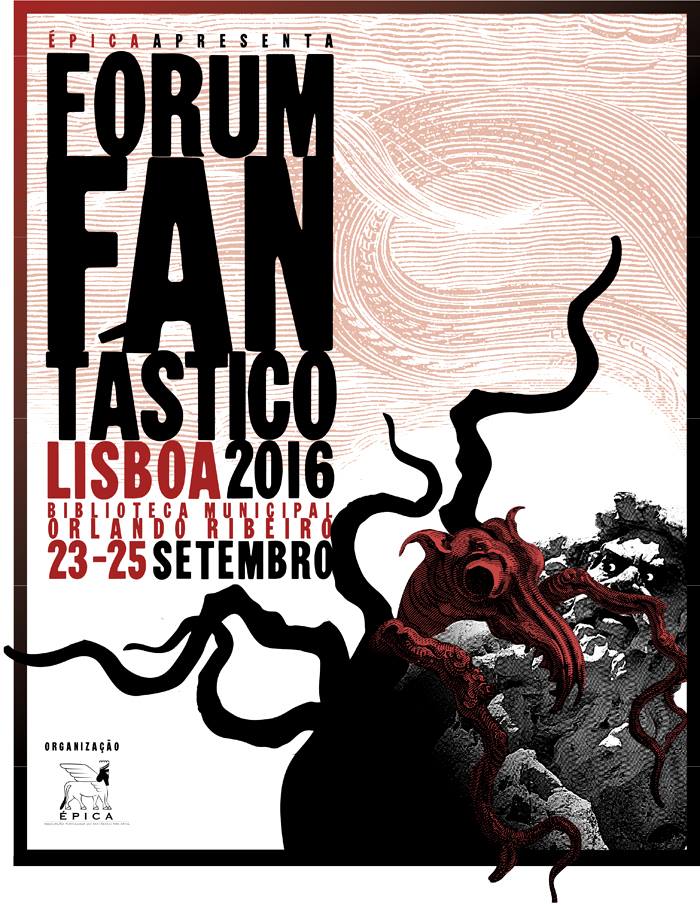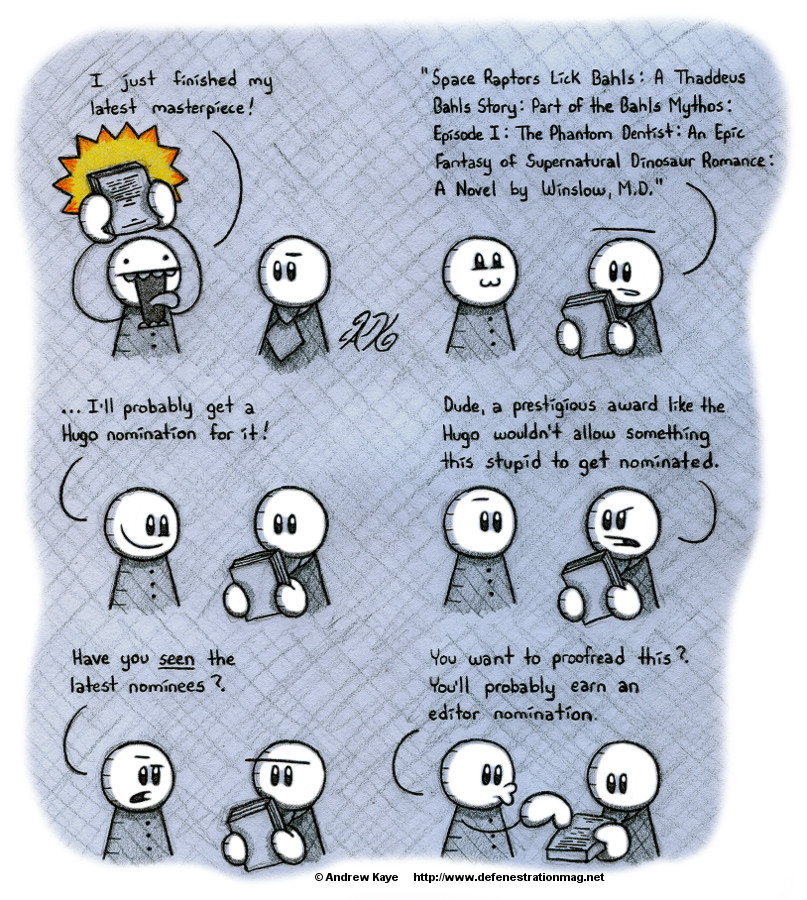(1) EXPECT THE UNEXPECTED. Ian Sales’ “Top five science fiction films” is a good post made even more interesting by the choice of John Carter (2012) as one of the five – not a movie many viewers would pick.
I saw someone recently tweet for requests for people’s top five science fiction films and I thought, I can do that. Then it occurred to me I’ve watched around 3000 movies in the past few years, and many of them were science fiction. So those films I think of as my favourites… well, surely I’d seen something that might lead to a new top five? Even if nothing sprung immediately to mind… True, I’m not that big a fan of science fiction cinema, and most of my favourite movies are dramas. And most of the sf films I have seen were commercial tentpole US movies, a genre I like even less…
I went back over my records, and pulled together a rough list of about fifteen films – it seems most of the sf films I’ve seen didn’t impress me very much – and then whittled that down to five. And they were pretty much old favourites. Which sort of rendered the whole exercise a bit pointless.
Or was it?…
(2) FILER SCORES SCALZI Q&A. While John Scalzi was in Hungary for the Budapest International Book Festival, he gave an interview to blogger Bence Pintér:
I will present an English version for my blog in a few days, but until then there is a short video interview at the end of the article, which is in English: “John Scalzi: A szélsojobbos trollok csak jót tettek a science fictionnel”.
(3) HELP ED NAHA. Lots of fans know Ed Naha as the creator and screenwriter for Honey I Shrunk The Kids, and a writer for Starlog, Fangoria and Heavy Metal. He also wrote scripts for the movies Doll, Trolls, and other horror/sf movies.
Paul Sanchez says, “Ed is facing an upcoming major life-threatening surgery. The great American health care system being what it is, it is not nearly enough (Shocking, right?)” So he’s launches a GoFundMe appeal —“Honey, I Shrunk Naha’s Medical Bills!”
In the first two days people have contributed $1,605 toward its $19,998 goal.
(4) ZHAO RETURNS. The author who pulled her book in response to a Twitter uproar now is ready for it to go to press.
The New York Times elaborates: “She Pulled Her Debut Book When Critics Found It Racist. Now She Plans to Publish.”
(5) WHY WAIT? “‘The Twilight Zone’ Renewed for Season 2 at CBS All Access” says The Hollywood Reporter.
CBS All Access and Jordan Peele will spend some more time in another dimension.
The streamer has renewed Peele and Simon Kinberg’s Twilight Zone revival for a second season. The pickup comes five episodes into the anthology’s run; new installments are released each Thursday.
(6) HORROR AT GETTYSBURG. Dann writes: “Via episode 216 of The Horror Show with Brian Keene, I learned about a new Con.”
The inaugural Creature Feature Weekend is scheduled to take place Labor Day weekend of 2019. (August 30 to September 1) In Gettysburg, PA. The con will feature the usual vendor’s room, autograph opportunities, nightly ghost/film location tours, and host an independent film festival.
Scheduled guests include Corey Feldman, Patty Mullen, Joe Bob Briggs, Geretta Geretta, Jason Brooks, Brandon Novak, Chalet Lizette Branna, Billy Bryan, David Eisenhauer John Russo, Glenn Ennis, and others.
Thought this might be of interest to fans of the horror corner of the genre pool.
(7) ANTHOLOGY ARCHITECTURE. In “Time Capsule: SF – The Year’s Greatest Science Fiction and Fantasy (1956)”, Nerds of a Feather contributors Adri Joy, Joe Sherry and Paul Weimer use a single work to focus their discussion of editor Judith Merril.
… Today we’re talking about Judith Merril’s first Year’s Best anthology: SF: The Year’s Greatest Science Fiction and Fantasy, originally published in 1956….
Paul: I am reminded that rights make it difficult to get many of these older anthologies except in falling-apart paperbacks. I do think there is something lost when these things fall out of print, because the notes make this more, in my view, than just the sum of the stories. There is value in reading this collection above and beyond the individual stories themselves.
On that note, one thing I did like in this anthology that you don’t get in a lot of modern anthologies is the “Sewing together” that Merrill does in providing explicit direction as to what she was thinking in placement of stories on subject and theme. I don’t think that gets enough play these days, and too often, anthologies seem to have stories in any old order without a sense of how they reflect and refract on each other. Merrill WANTS you to know what she is thinking. It’s a more “present” place for an anthologist than what you get these days.
(8) TODAY’S BIRTHDAYS.
[Compiled by Cat Eldridge.]
- Born April 29, 1887 — H. Bedford-Jones. Pulp writer of whom only maybe ten percent of his twelve hundred stories could be considered genre but some such as the Jack Solomon novels, say John Solomon, Argonaut and John Solomon’s Biggest Game are definitely genre. Like many of the early pulp writers, he used a number of pen names, to wit Michael Gallister, Allan Hawkwood, Gordon Keyne, H. E. Twinells and L. B. Williams. Wildside Press published in 2006 a collection of his short stories, The House of Skulls and Other Tales from the Pulps. (Died 1949.)
- Born April 29, 1908 — Jack Williamson. I’ll frankly admit that he’s one of those authors that I know I’ve read a fair amount by can’t recall any specific titles as I didn’t collect him. A quick research study suggests the Legion of Space series was what I liked best. What did y’all like by him? (Died 2006.)
- Born April 29, 1923 — Irvin Kershner. Director and producer of such genre works as the Amazing Stories and seaQuest DSV series, Never Say Never Again, RoboCop 2 and The Empire Strikes Back. By the way, several of the sources I used in compiling this Birthday claimed that was the best Star Wars film. (Died 2010.)
- Born April 29, 1946 — Humphrey Carpenter. Biographer whose notable output of biographies includes J. R. R. Tolkien: A Biography; also did editing of The Letters of J. R. R. Tolkien, and is responsible for The Inklings: CS Lewis, JRR Tolkien, Charles Williams and their Friends. (Died 2005.)
- Born April 29, 1955 — Kate Mulgrew, 64. Captain Kathryn Janeway on Star Trek: Voyager. Other genre roles include voicing Red Claw on Batman: The Animated Series, Jane Lattimer on Warehouse 13 and Clytemnestra in Iphigenia at the Signature Theatre Company.
- Born April 29, 1968 — Michelle Pfeiffer, 61. Selina Kyle aka Catwoman in Tim Burton’s Batman Returns. I saw it once which was quite enough. She was also in the much better The Witches of Eastwick as Sukie Ridgemont and was Brenda Landers in the “Hospital” segment of Amazon Women on the Moon. She played Laura Alden in Wolf, voiced Tsipp?r?h in The Prince of Egypt, was Titania in A Midsummer Night’s Dream, voiced Eris in Sinbad: Legend of the Seven Seas, was Lamia in Stardust and is playing The Wasp (Janet van Dyne) in Ant-Man and the Wasp.
- Born April 29, 1970 — Uma Thurman, 49. Venus / Rose in The Adventures of Baron Munchausen (Kage’s favorite film), Maid Marian in the Robin Hood starring Patrick Bergin which I highly recommend, Poison Ivy in Batman & Robin (bad, bad film) which she will follow by being Emma Peel in The Avengers, an even worse stinker of a film, and Irene in Gattaca.
(9) GAME OF ROT-13. BEWARE SPOILERS for last night’s Game of Thrones episode.The Mary Sue asks “Ubj va gur Jbeyq Pna Nalbar Fnl Neln Fgnex Vf n Znel Fhr?”.
Gvzr sbe zr gb erne zl htyl urnq va guvf pbairefngvba naq fgneg fpernzvat ng crbcyr, orpnhfr gur tebff pbafrafhf nsgre gur yngrfg rcvfbqr bs UOB’f Tnzr bs Guebarf vf gung Neln Fgnex, n jbzna jub qrqvpngrq ure yvsr gb pbzong genvavat, vf abj n Znel Fhr. Nsgre fur raqrq hc qrsrngvat gur Avtug Xvat ol fgnoovat uvz jvgu qentbatynff, zra ner znq gung n jbzna qvq vg vafgrnq bs gurve cerpvbhf Wba Fabj.
(10) QUICK, WATSON. Paul Weimer reviews a Holmes-inspired novel in “Microreview [book]: The Hound of Justice, by Claire O’Dell” at Nerds of a Feather.
By the end of A Study in Honor, the first in Claire O’Dell’s Janet Watson Chronicles, the writer had established the parameters of her world, introduced our two main characters in full, Dr. Janet Watson and Sara Holmes. These two queer women of color as posited are indeed this world’s versions of the classic detective duo, in a near future 21st century Washington D.C, where America, after the divisiveness of a Trump administration is wracked by something even worse: A new Civil War. The two meet, and a first step toward Watson engaging with the war-torn past that cost her an arm is the central mystery at the heart of that novel.
In The Hound of Justice (yet a second novel title in homage to Doyle)., Dr. Watson’s story continues…
(11) XENON. “Scientists witness the rarest event in the Universe yet seen” — at SYFY Wire, Phil Plait tells what made it possible.
Over a kilometer below the surface of Italy, deep beneath the Gran Sasso mountain, lies a cylindrical tank. It’s roughly a meter high, a bit less than that wide, and it’s filled with an extraordinary substance: three and a half tons of ultra-pure xenon, kept liquid at a temperature of almost a hundred degrees Celsius below zero.
The tank is part of an experiment called XENON1T, and scientist built it in the hopes of detecting an incredibly rare event: an interaction of a dark matter particle with a xenon nucleus, predicted to occur if dark matter is a very specific kind of particle itself. Should they see such an event, it will nail down what dark matter is, and change the course of astronomy.
Unfortunately, they haven’t seen that yet. But instead, what they have seen is something far, far more rare: the decay of xenon-124 into tellurium-124. The conditions need to be so perfect for this to happen inside the nucleus of a xenon-124 atom that the half-life* for this event is staggeringly rare: It’s 1.8 x 1022 years.
(12) SOURCE OF OLD EARWORMS. NPR’s “From Betty Boop To Popeye, Franz Von Suppé Survives In Cartoons” includes the cartoons mentioned in the headline.
On April 18, 2019, Franz von Suppé was born on 200 years ago in what is now Croatia, but he went to Vienna as a young man and built a successful career as a conductor and composer. And while you may never have heard of von Suppé, if you like movies, cartoons, or video games, odds are you’ve heard his music.
(13) BEFORE THE BREAKTHROUGH. BBC delves into “‘The Wandering Earth’ and China’s sci-fi heritage”.
The Wandering Earth has been billed as a breakthrough for Chinese sci-fi.
The film tells the story of our planet, doomed by the expanding Sun, being moved across space to a safer place. The Chinese heroes have to save the mission – and humanity – when Earth gets caught in Jupiter’s gravitational pull.
Based on Hugo Award winner Liu Cixin’s short story of the same name, Wandering Earth has already grossed $600m (£464m) at the Chinese box office and was called China’s “giant leap into science fiction” by the Financial Times. It’s been bought by Netflix and will debut there on 30 April.
But while this may be the first time many in the West have heard of “kehuan” – Chinese science fiction – Chinese cinema has a long sci-fi history, which has given support to scientific endeavour, offered escapism from harsh times and inspired generations of film-goers.
So for Western audiences eager to plot the rise of the Chinese sci-fi movie, here are five films I think are worth renewed attention….
(14) PLEASE TO RETURN TO SENDER. “Norway finds ‘Russian spy whale’ off Arctic coast”: BBC has the story.
A beluga whale found off Norway’s coast wearing a special Russian harness was probably trained by the Russian navy, a Norwegian expert says.
Marine biologist Prof Audun Rikardsen said the harness had a GoPro camera holder and a label sourcing it to St Petersburg. A Norwegian fisherman managed to remove it from the whale.
He said a Russian fellow scientist had told him that it was not the sort of kit that Russian scientists would use.
Russia has a naval base in the region.
The tame beluga repeatedly approached Norwegian boats off Ingoya, an Arctic island about 415km (258 miles) from Murmansk, where Russia’s Northern Fleet is based. Belugas are native to Arctic waters.
…A Russian reserve colonel, who has written previously about the military use of marine mammals, shrugged off Norway’s concern about the beluga. But he did not deny that it could have escaped from the Russian navy.
Interviewed by Russian broadcaster Govorit Moskva, Col Viktor Baranets said “if we were using this animal for spying do you really think we’d attach a mobile phone number with the message ‘please call this number’?”
(15) WHAT TO WANT. I learned something about Murderbot, and something about the reviewer, Andrea, in “Exit Strategy by Martha Wells” at Little Red Reviewer.
…When I first started reading Exit Strategy, I thought the plot was thin and weak. I felt like I wasn’t connecting with this book as much as I had with earlier entries, and that annoyed me. Call it user-error. More on that later, I promise….
(16) WHERE’S OSHA DURING ALL THIS? It’s James Davis Nicoll’s turn to deconstruct a classic: “On Needless Cruelty in SF: Tom Godwin’s ‘The Cold Equations’”.
Science fiction celebrates all manner of things; one of them is what some people might call “making hard decisions” and other people call “needless cruelty driven by contrived and arbitrary worldbuilding chosen to facilitate facile philosophical positions.” Tomato, tomato.
Few works exemplify this as perfectly as Tom Godwin’s classic tale “The Cold Equations.”…
James has a good time, and doubtless some of you will, too. Teenaged me, on the other hand, considers his feelings mocked….
(17) TURNING UP THE LOST VOLUME. “Christopher Columbus’ son’s universal library is newly rediscovered in this lost tome”.
Hernando Colón, the illegitimate son of Italian colonizer Christopher Columbus, had an obsession with books. Colón traveled the world to attempt an ambitious dream: to collect and store all of the world’s books in one library. Summaries of the volumes he gathered were distilled in the “Libro de los Epítomes,” or “The Book of Epitomes” — that repository had been lost to history for centuries.
…This was right at the dawn of the era of print, so the number of books was rising exponentially. He realized that the idea of this library was a wonderful one, but of course, it might become unmanageable if he was just collecting the books and not finding a way to organize and distill them. So he paid an army of readers to read every book in the library and to distill it down to a short summary so that all of this knowledge could be put at the disposal of a single person.
It’s this book, the “Libro de los Epítomes,” that is described by his last librarian in a document at the end of Hernando’s life, but then disappears and isn’t really heard of for basically 500 years because it’s been sitting for at least 350 of those years in Scandinavia, where it was unrecognized….
Somehow this reminds me of Forry Ackerman’s answer to the question of whether he’d read all the books in his collection – “Every last word.” By which he meant he’d looked at the last word on the last page of all of them.
[Thanks to rcade, Rich Lynch,, JJ, Chip Hitchcock, Tom Mason, Cat Eldridge, Mike Kennedy, Martin Morse Wooster, Carl Slaughter, John King Tarpinian, and Andrew Porter for some of these stories. Title credit goes to File 770 contributing editor of the day Daniel Dern.]






